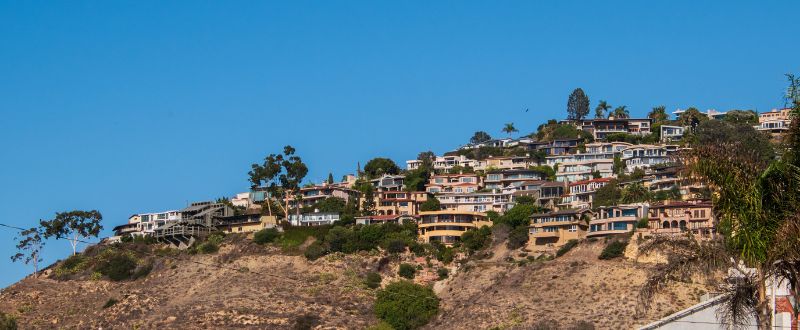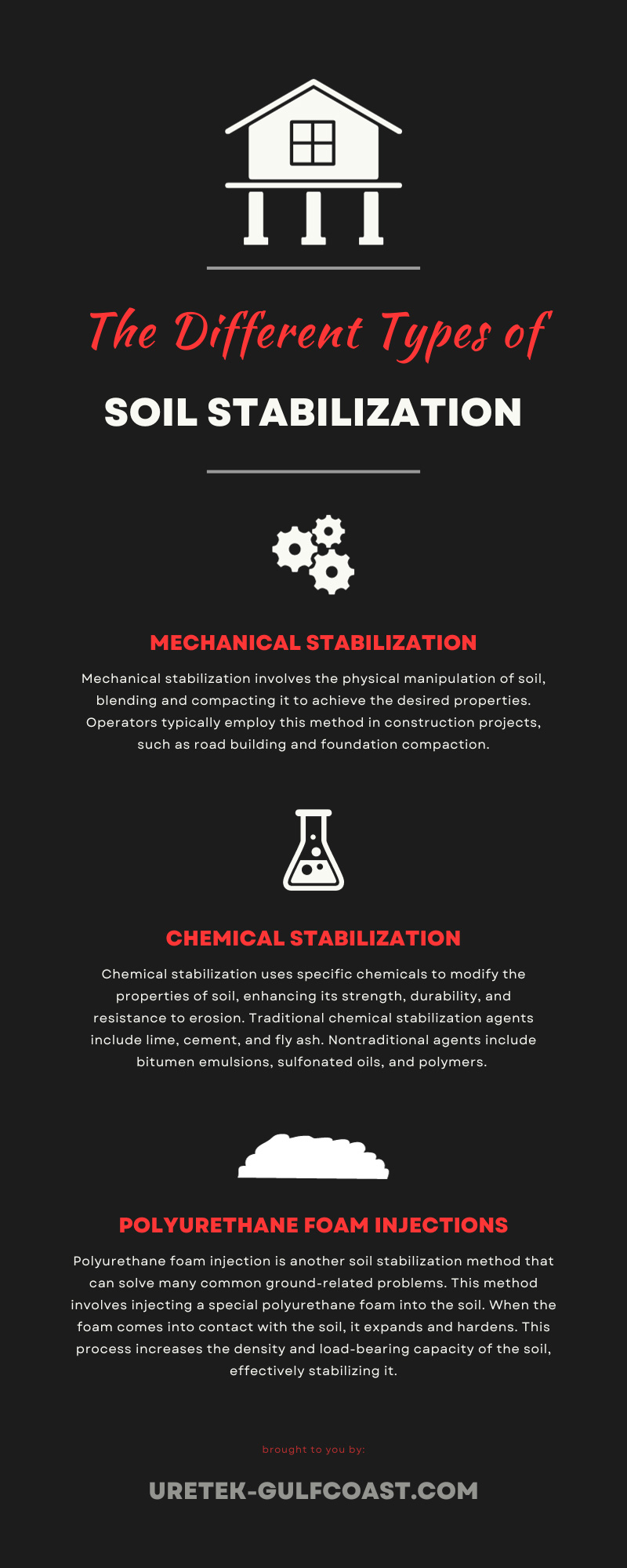Soil stabilization improves the physical properties of soil, enhancing its bearing capacity and resistance to erosion and weathering. It plays a vital role in the construction and agriculture industries, ensuring a strong and stable foundation for various infrastructures and helping prevention soil degradation.
Learn about how the different types of soil stabilization improve soil and protect infrastructure. We’ll first examine soil stabilization methods and then do a brief overview of the characteristics of different soil types.
Understanding Unstable Soil
Unstable soil refers to soil that lacks the necessary strength or stability to support structures built upon it. This instability often results from various factors, including poor compaction, excessive moisture, or organic matter in the soil. For instance, soil that is too loose or sandy may not compact well, resulting in instability. Likewise, soil with high clay content can expand and contract dramatically with changes in moisture, leading to uneven ground and instability.
Soil stabilization plays a crucial role in addressing these dangerous and expensive issues. No matter the specific method, the process alters the soil’s properties to improve its shear strength, reduce compressibility, enhance load-bearing capacity, and increase its resistance to softening by water.
By stabilizing the soil, engineers can ensure a safer and more secure foundation for construction projects. It also helps prevent problems such as soil erosion and landslides, contributing to environmental sustainability.
Mechanical Stabilization
Mechanical stabilization involves the physical manipulation of soil, blending and compacting it to achieve the desired properties. Operators typically employ this method in construction projects, such as road building and foundation compaction.
The equipment used in mechanical stabilization includes compactors, bulldozers, and graders, which uniformly mix and compact the soil. Thanks to advanced soil stabilization techniques, the mechanical method is not as frequently used as it once was.
Pros and Cons of Mechanical Stabilization
Some benefits of mechanical stabilization include its permanence and minimal environmental impact. It ensures a stable foundation for structures and can provide long-lasting results with proper maintenance.
Mechanical stabilization requires heavy equipment to apply a large compressive force. Because of this, the method is time-consuming and expensive.
Chemical Stabilization
Chemical stabilization uses specific chemicals to modify the properties of soil, enhancing its strength, durability, and resistance to erosion. Traditional chemical stabilization agents include lime, cement, and fly ash. Nontraditional agents include bitumen emulsions, sulfonated oils, and polymers. These substances interact with the soil particles, binding them together and reducing their susceptibility to water infiltration.
The chemical stabilization process involves mixing the agent and soil and then compacting the soil. Chemical stabilization may not be long-lasting if the chemical additive loses its effectiveness or if it is not used on the correct soil type.
Polyurethane Foam Injections
Polyurethane foam injection is another soil stabilization method that can solve many common ground-related problems. This method involves injecting a special polyurethane foam into the soil. When the foam comes into contact with the soil, it expands and hardens. This process increases the density and load-bearing capacity of the soil, effectively stabilizing it.
Consider Minimally Invasive Injection Techniques
URETEK ICR Gulf Coast provides reliable soil stabilization and sinkhole repair in the Houston area. Our patented geopolymer injection technique allows us to consolidate weak subsurface soil without excavation. Minimally invasive soil stabilization services create a sturdier subgrade surface for foundations.
Injecting polyurethane foam is suitable for a variety of situations, including foundation repair, concrete lifting, and soil compaction. The stabilized soil provides a solid base for construction, helping prevent issues such as sinking or shifting structures. It also improves water drainage, reducing the risk of water damage.
Soil Types
Understanding the various types of soil stabilization methods is crucial for selecting the most suitable method for specific soil conditions and projects. Mechanical, chemical, and polyurethane foam injection stabilization techniques each offer distinct advantages and potential limitations.
Soil type is one of the most essential factors for ensuring long-term stability. Every region has a unique soil composition that helps determine the best soil stabilization method.
Clay Soil
Clay soil is prevalent throughout Houston and has a high water retention capacity. Excessive water retention harms drainage, which can cause issues for plant growth and building foundations.
When clay soil gets wet, it expands drastically; when dry, it cracks. Expansive clay soil causes concrete to heave, shift, and crack. Stabilizing the soil protects structures from buckling and warping.
Loamy Soil
Loamy soil is a combination of clay, sand, and silt particles, resulting in a well-balanced and fertile soil type. It’s perfect for agriculture and landscaping due to its excellent structure and nutrient retention capabilities. Proper management of loamy soil ensures long-term agricultural productivity and contributes to a healthy ecosystem.
Sandy Soil
Sandy soil, with its coarse texture and low water retention properties, is found in various US states, including Texas, Florida, Nebraska, and Minnesota. Its well-draining nature results in reduced soil fertility as nutrients are easily washed away. This makes sandy soil less conducive to plant growth, and its poor load-bearing capacity can create issues for building foundations.
One solution to improve sandy soil productivity is the incorporation of organic matter and amendments. This not only improves fertility but also helps with water retention, creating a more stable environment for plant roots and structures.
Soil types significantly impact regional agriculture and construction. Understanding the unique soil composition is key to effective soil stabilization.
Repair Unstable Soil Quickly
Unstable soil can lead to sinkholes and damage foundations, causing settling, shifting, cracking, and leaks. Common culprits include groundwater pockets, deep voids, and soil fissures caused by weather conditions. The longer you wait, the more damage your property may suffer, including plumbing and mold problems.
Each stabilization method has unique strengths and potential limitations. Choosing the right method for the specific soil conditions and project requirements optimizes the durability, productivity, and environmental sustainability of construction projects.
URETEK’s soil-stabilizing polyurethane foam injections strengthen loose soils and increase load-bearing capacity. We offer minimally invasive services to prevent escalating repair costs. Our patented Deep Injection® technique effectively stabilizes weak subsurface soil without excavation. Call us today to resolve unstable soil at subsurface depths.


